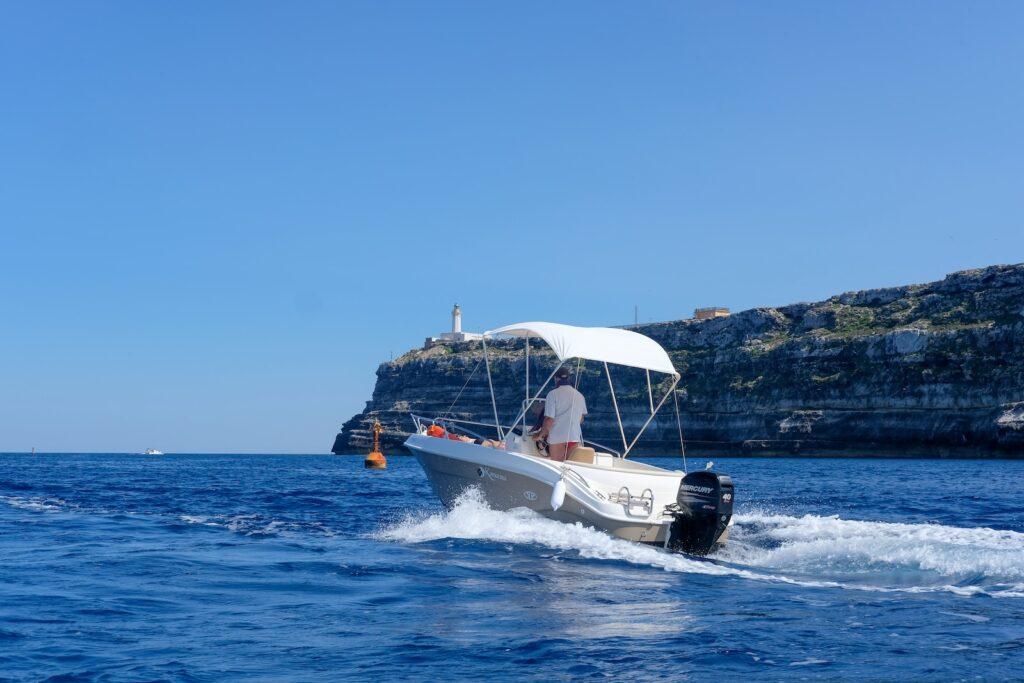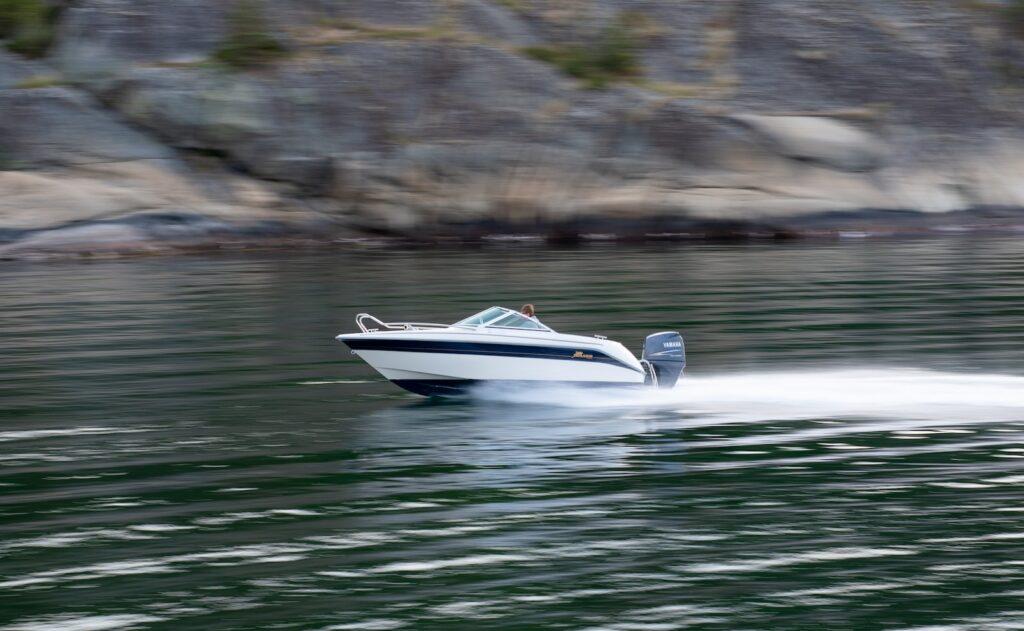You See a Motorboat Approaching on Your Right. What Action Should You Take
You might think that when you see a motorboat approaching on your right, there’s not much you need to do. But let me tell you, taking the right action in this situation is crucial for your safety.
By assessing the situation, determining the speed and distance of the motorboat, and checking for any potential obstacles or hazards, you can make sure you’re prepared.
In this article, we’ll guide you through the necessary steps to ensure a safe encounter with a motorboat.
Key Takeaways:
- Evaluate the distance between your boat and the motorboat on your right.
- Assess the speed and direction of the motorboat and adjust your own speed and direction accordingly.
- Be vigilant and aware of potential obstacles or hazards in the water.
- Use hand signals to communicate your intentions and maintain clear communication with the other boater.
Assess the Situation
You should quickly assess the situation and determine the appropriate action to take.
As the motorboat approaches on your right, it is crucial to evaluate the distance between your boat and the oncoming vessel. Check if there is enough space for both boats to pass safely without any risk of collision.
Keep an eye on the speed and direction of the motorboat to better understand its intentions. Assess the water conditions and any potential obstacles that could affect your maneuverability. If you notice any potential danger, such as a narrow channel or shallow waters, it may be necessary to slow down or alter your course to avoid any mishaps.
Observe the behavior of the other boat’s operator. Are they following the rules of navigation? Do they seem aware of your presence? If you feel uncertain or unsafe, it is wise to communicate your intentions using visual or auditory signals, such as sounding your horn or raising your hand.

Determine the Speed and Distance of the Motorboat
When assessing the motorboat’s approach, it’s important for you to determine its speed and distance to make informed decisions.
Adjusting your own speed and direction accordingly will help ensure a safe interaction on the water.
Assessing Motorboat’s Approach
As the motorboat approaches on your right, quickly assess its distance and speed. Look out for any visual cues that can help you determine its proximity and how fast it is coming towards you. Pay attention to the size of the boat in relation to other objects around it. Is it getting larger or smaller? This will give you a sense of its distance.
Observe how quickly it is closing in on you. Is it moving at a slow, moderate, or fast pace? By analyzing these factors, you can make an informed decision about the appropriate action to take. Whether it’s maintaining your course, adjusting your speed, or altering your direction, your assessment of the motorboat’s approach is crucial in ensuring your safety on the water.
Adjusting Speed and Direction
Take a moment to evaluate the speed and direction of the approaching motorboat and make any necessary adjustments to your own speed and direction.
If the motorboat is approaching quickly and appears to be on a collision course, it’s important to slow down and steer away from its path. Reduce your speed gradually to avoid causing any sudden movements that could further increase the risk of a collision.
Assess the direction in which the motorboat is moving and adjust your course accordingly. If it’s veering to the left, for example, you may need to steer to the right to create enough distance between the two vessels.
Always prioritize safety and maintain a clear line of communication with the other boat to ensure a safe and smooth passage.
Check for Any Potential Obstacles or Hazards
Make sure you’re scanning the water for any possible obstacles or hazards as the motorboat approaches on your right. It’s crucial to stay vigilant and aware of your surroundings to ensure a safe and smooth navigation. Keep your eyes focused on the water ahead and around you, searching for any signs of potential dangers.
Look out for floating debris, such as logs, branches, or even trash, which could pose a significant risk to your boat’s propeller or cause damage to the hull. Additionally, be cautious of shallow areas or sandbars that might be hidden beneath the water’s surface. These can unexpectedly damage your boat or even cause it to get stuck.
Keep an eye out for other boats or watercrafts that may be in the vicinity. It’s essential to give them sufficient space and maintain a safe distance to avoid any collision. Remember, sharing the waterways requires mutual respect and cooperation.
Be aware of any swimmers or divers in the water. They may be difficult to spot, so it’s crucial to be observant and cautious. Adjust your speed and direction accordingly to ensure their safety.

Signal Your Intentions to the Motorboat
Signal your intentions to the motorboat by using clear hand signals and proper communication techniques. This is important to ensure a safe and efficient interaction with the motorboat. By clearly indicating your intentions, you can avoid any potential accidents or misunderstandings on the water.
| Hand Signal | Meaning |
|---|---|
| Hand up, palm facing forward | Stop |
| Pointing with index finger | Turn right |
| Pointing with index and middle finger | Turn left |
| Hand waving side to side | Slow down |
| Thumbs up | Good to go |
When the motorboat is approaching on your right, it is crucial to communicate your actions to the driver. If you want to continue straight, simply maintain your course and avoid any sudden movements. If you intend to turn, use the appropriate hand signal to indicate your direction. This will give the motorboat driver a clear understanding of your intentions and allow them to adjust their course accordingly.
Adjust Your Course or Speed if Necessary
If the motorboat is approaching on your right, it’s important to adjust your course or speed if necessary in order to ensure a safe interaction on the water.
When you see a motorboat approaching from the right, it’s crucial to take immediate action to avoid a potential collision. Assess the situation and determine if you need to alter your course or slow down to maintain a safe distance.
If the motorboat is moving at a faster speed or appears to be on a collision course with you, it is advisable to adjust your course by turning to the left to create more distance between the two vessels.
Similarly, if you are moving at a faster speed than the motorboat, consider slowing down to allow the motorboat to pass safely on your right side.
Remember, it’s essential to communicate your intentions to the motorboat through hand signals or sound signals to ensure a clear understanding of your actions.
Maintain a Safe Distance From the Motorboat
When encountering a motorboat on the water, it’s crucial to adjust your speed accordingly to ensure a safe distance between both vessels.
Stay alert and cautious, keeping a watchful eye on your surroundings and any potential hazards.
Remember to give right of way to the motorboat when necessary, ensuring a smooth and courteous navigation experience for everyone on the water.

Adjust Speed Accordingly
Slow down and adjust your speed accordingly when you see a motorboat approaching on your right. This is an essential action to ensure the safety of both you and the other boaters. Here’s what you should do:
- Reduce your speed: Gradually decrease your speed to allow for better maneuverability and reaction time.
- Maintain a safe distance: Keep a reasonable distance from the motorboat, giving both vessels enough space to navigate safely.
- Be aware of wake: Motorboats can create large wakes that may affect your boat’s stability. Adjust your speed to minimize the impact of these waves.
- Communicate with hand signals: Use clear and concise hand signals to indicate your intentions to the motorboat driver and ensure smooth navigation.
Navigating a boat requires keen attention to the surrounding environment and the careful modulation of speed. Just as a driver adjusts to road conditions, a boater must “adjust speed accordingly” when on water. Factors such as water traffic, wave height, wind speed, underwater obstructions, and proximity to shorelines or docks play a crucial role in determining appropriate boat speed. Traveling too fast can jeopardize the safety of the vessel, its occupants, and other nearby boats, while moving too slowly may impede navigation and control.
Stay Alert and Cautious
Now that you have adjusted your speed accordingly, it is crucial to stay alert and cautious as you see a motorboat approaching on your right. Keep your eyes focused on the boat, assessing its speed and direction.
Maintain a safe distance, ensuring there is enough space between your boat and the motorboat to avoid any potential collision. Be prepared to take evasive action if necessary, such as slowing down or changing your course.
Keep in mind that other boaters may not always follow the rules, so it’s important to stay vigilant. Stay aware of your surroundings, including other boats, buoys, and any potential hazards in the water.
Give Right of Way
Remember to always give right of way to other boaters, especially when navigating through busy areas or approaching intersections. It’s important to prioritize safety and be courteous on the water.
When you see a motorboat approaching on your right, here are some actions you should take:
- Slow down: Reduce your speed to allow the motorboat to pass safely.
- Maintain course: Keep your boat on a steady path to avoid any confusion or sudden maneuvers.
- Communicate: Use hand signals or horn blasts to indicate your intentions and ensure clear communication with the other boater.
- Be patient: If the motorboat is not responding or seems unaware of your presence, give them additional time and space to react before making any sudden moves.
“Right of way” refers to the legal or customary entitlement of one party or vehicle to proceed ahead of others in a particular situation or place. This term is commonly used in traffic and road safety regulations to determine which vehicle or pedestrian has the priority to move first. Understanding and respecting the right of way is crucial for preventing accidents and ensuring the smooth flow of traffic. Whether at intersections, pedestrian crossings, or merging lanes, adhering to right-of-way rules helps maintain order on the roads and promotes safety for all users.
Conclusion
In conclusion, when you spot a motorboat approaching on your right, it’s essential to assess the situation calmly. Determine the speed and distance of the motorboat, keeping an eye out for any potential obstacles or hazards.
Signal your intentions to the motorboat, and if needed, make adjustments to your course or speed. Remember to maintain a safe distance from the motorboat to ensure a pleasant and enjoyable boating experience for everyone involved.
